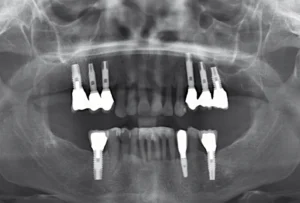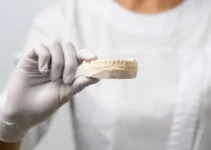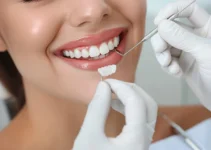Jaw bone deficiency is a common condition that may result from various factors such as tooth loss, gum disease, or trauma. This issue not only affects facial aesthetics but can also complicate dental procedures like implants. Understanding the underlying causes of jaw bone deficiency is essential for selecting the right treatment approach, which may include options like bone grafting or specialized regenerative procedures. Early intervention can greatly improve outcomes, making it crucial to seek advice from a dental specialist familiar with these conditions.
Causes of Jaw Bone Deficiency
Jaw bone deficiency is a common issue that can affect a person’s oral health and overall quality of life. Understanding the underlying causes is essential for effective treatment and prevention. In this section, we will explore several primary causes of jaw bone deficiency, including genetic factors, periodontal diseases, and trauma or injury.
By recognizing the factors that contribute to jaw bone deficiency, dental professionals can develop comprehensive treatment plans that address both the symptoms and the root causes. This holistic approach ensures better outcomes for patients and helps maintain long-term oral health.
Genetic Factors
Genetic predisposition plays a significant role in the development of jaw bone deficiency. Certain inherited conditions can affect bone density and structure, making individuals more susceptible to bone loss. For example, osteogenesis imperfecta, a genetic disorder, causes brittle bones and can significantly impact jaw bone health.
Researchers have identified specific genes linked to bone density, such as the RANKL and OPG genes, which regulate bone remodeling. Variations in these genes can lead to imbalances in bone formation and resorption processes, contributing to jaw bone deficiency.
It’s essential for individuals with a family history of bone-related conditions to undergo regular dental check-ups. Early detection and intervention can mitigate the adverse effects of genetic predispositions on jaw bone health.
Periodontal Diseases
Periodontal diseases, including gingivitis and periodontitis, are leading causes of jaw bone deficiency. These infections, caused by bacterial plaque, lead to inflammation and deterioration of the gums and supporting bone structures. Periodontitis, a more severe form of the disease, can result in significant bone loss if left untreated.
Several studies have shown a correlation between chronic periodontal diseases and jaw bone deficiency. The inflammatory response triggered by bacteria can break down the bone tissue surrounding the teeth, resulting in tooth loss and decreased bone density.
Effective management of periodontal diseases includes maintaining good oral hygiene, regular dental cleanings, and, in some cases, surgical interventions. Addressing periodontal issues promptly can prevent extensive bone damage and preserve jaw bone integrity.
Trauma or Injury
Physical trauma or injury to the jaw can result in bone deficiency. Accidents, sports injuries, or surgical procedures can cause fractures or damage to the jaw bone. In severe cases, the body may resorb the damaged bone, leading to a deficiency.
Immediate medical attention following a jaw injury can significantly reduce the risk of long-term bone loss. Dentists and oral surgeons can employ various techniques, such as bone grafting or regenerative procedures, to restore and maintain bone structure after trauma.
Additionally, individuals who engage in high-risk activities should consider using protective gear to prevent jaw injuries. Helmets, mouthguards, and other protective devices can minimize the impact of trauma and safeguard jaw bone health.
Understanding these causes of jaw bone deficiency can help individuals take proactive steps in maintaining their oral health. For more insights into dental health and advanced treatment options, we invite you to explore our other articles on related topics.
Symptoms and Diagnosis of Jaw Bone Deficiency
Symptoms of Jaw Bone Deficiency
Jaw bone deficiency can manifest through a variety of symptoms, making early diagnosis crucial for effective treatment. One of the most common symptoms is loose or shifting teeth, which occurs because the bone structure supporting the teeth is deteriorating. Additionally, patients might experience difficulty chewing or a noticeable change in their bite alignment. This can lead to discomfort and affect one’s ability to consume a balanced diet.
Another characteristic symptom is facial changes. As the jaw bone diminishes, the structure of the face can change, leading to a sunken or aged appearance. This not only affects physical aesthetics but can also impact self-confidence and social interactions. Other symptoms include chronic pain in the jaw area and swelling or inflammation of the gums, which are indicative of underlying bone issues or infections.
Diagnosis Techniques
Diagnosing jaw bone deficiency typically involves a comprehensive review of the patient’s medical history, clinical examinations, and advanced imaging techniques. Dentists often start with a thorough visual examination and palpation of the jaw and teeth. Following the initial assessment, X-rays are commonly used to provide a more detailed view of the bone structure. X-rays can reveal areas of bone loss that are not visible during a physical exam. For a more precise evaluation, 3D imaging techniques such as Cone Beam Computed Tomography (CBCT) are employed. These advanced imaging methods offer a three-dimensional view of the jaw, allowing dentists to assess the extent of bone loss accurately. CBCT scans are particularly useful for planning surgical interventions, such as bone grafts or dental implants. Additionally, dentists may perform bone density tests to measure the strength and volume of the jaw bone.
In some cases, biopsies may be required to rule out any pathologies or to confirm specific conditions contributing to bone loss. Early detection through these diagnostic methods is essential for initiating appropriate treatments and preventing further deterioration.
Understanding the symptoms and diagnosis of jaw bone deficiency is crucial for maintaining oral health and achieving successful outcomes in dental treatments. For more comprehensive information on related topics, read our other articles.
Treatment Options for Jaw Bone Deficiency
Jaw bone deficiency can present significant challenges for patients considering dental implants. However, modern dental technology and advanced techniques offer several solutions to address this issue. One of the primary methods to treat jaw bone deficiency is through bone grafting procedures.
Bone grafting is a surgical procedure that uses transplanted bone to repair and rebuild diseased or damaged bones. This technique is particularly useful in dentistry to augment a deficient jawbone, providing a strong foundation for dental implants. Bone grafts can come from the patient’s own body, a donor, or synthetic materials, each offering unique benefits.
Let’s explore some of the most common bone grafting procedures used to treat jaw bone deficiency in dental implantology.
Bone Grafting Procedures
Bone grafting procedures are essential for patients with insufficient jawbone volume or density, which is critical for the successful placement of dental implants. Several types of bone grafting techniques are employed based on the specific needs of the patient.
- Autografts: This type involves taking bone from the patient’s own body, often from the hip or another part of the jaw. Autografts are advantageous because they have the highest success rate due to the body’s natural acceptance of its own tissue.
- Allografts: Allografts use bone from a donor, typically processed and sterilized to ensure safety. These grafts are convenient as they avoid the need for a secondary surgical site, reducing overall recovery time.
- Xenografts: Xenografts come from a different species, usually bovine. These grafts act as a framework for natural bone to grow around and are gradually replaced by the patient’s own bone over time.
- Alloplasts: Synthetic materials, such as calcium phosphate or bioactive glass, are used in alloplasts. These materials are biocompatible and provide a scaffold for bone regeneration, making them an excellent option for some patients.
Each type of bone grafting procedure has its own set of pros and cons, and the choice of graft depends on various factors, including the extent of bone deficiency, patient health, and specific dental requirements. The ultimate goal of bone grafting is to create a stable and robust foundation for the placement of dental implants, ensuring long-term success and functionality.
In cases where bone grafting alone may not be sufficient, additional surgical techniques such as guided bone regeneration (GBR) or the use of growth factors like platelet-rich plasma (PRP) may be employed to enhance the bone healing process. By combining these advanced methods, dental professionals can significantly improve the outcomes for patients with severe jaw bone deficiencies. If you’re interested in learning more about dental implants and bone regeneration techniques, we invite you to explore our other articles. Stay informed and make the best decision for your dental health!
Understanding Jaw Bone Deficiency
If you’re facing jaw bone deficiencies, knowing what goes behind the scenes and available treatment choices can be truly empowering. Here, we address common queries surrounding this condition.
What causes jaw bone deficiency?
Jaw bone deficiency can occur due to several factors, including periodontal disease, tooth loss, trauma, and certain medical conditions. Periodontal disease results in the destruction of the supporting bone around the teeth, and the absence of a tooth can lead to the resorption or natural dissolution of bone in the area. These conditions reduce the bone’s volume and density, making it crucial to address them promptly.
What are the treatment options for jaw bone deficiency?
Treatment options for jaw bone deficiency focus on bone regeneration and restoration. Dental implants combined with bone grafting are common treatments. Bone grafts can come from the patient’s own body or from synthetic materials, which help in rebuilding the bone structure. Advanced technology also allows for the use of growth factors and scaffold materials that encourage the body’s natural bone growth, enhancing treatment efficacy and success.

My name is Salman Kapa, a 73-year-old expert in bone regeneration and dental implantology. With decades of experience in the field, I am dedicated to advancing our understanding of oral health and hygiene. Through my research and writing, I aim to contribute to the development of innovative solutions in dental care.




